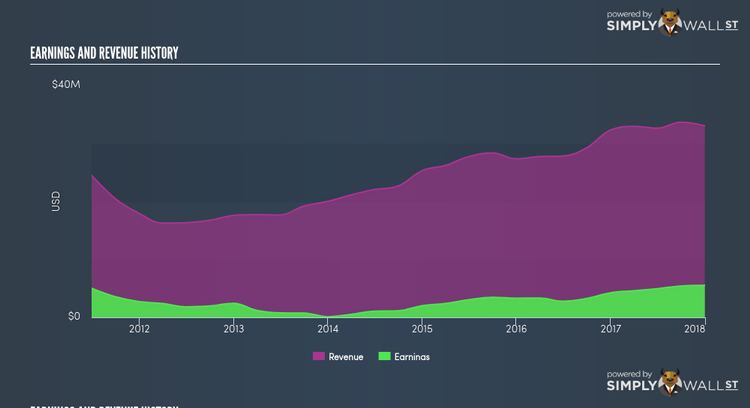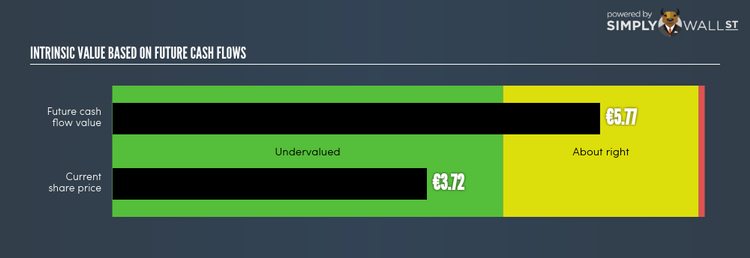Why Payton Planar Magnetics Ltd (EBR:PAY) Is An Attractive Stock On Right Now

As an investor, I look for investments which does not compromise one fundamental factor for another. By this I mean, I look at stocks holistically, from their financial health to their future outlook. In the case of Payton Planar Magnetics Ltd (ENXTBR:PAY), it is a financially-robust company with a a strong history of performance, trading at a great value. Below is a brief commentary on these key aspects. For those interested in digger a bit deeper into my commentary, take a look at the report on Payton Planar Magnetics here.
Flawless balance sheet with solid track record
PAY delivered a bottom-line expansion of 30.35% in the prior year, with its most recent earnings level surpassing its average level over the last five years. In addition to beating its historical values, PAY also outperformed its industry, which delivered a growth of 19.35%. This is an optimistic signal for the future. PAY is financially robust, with ample cash on hand and short-term investments to meet upcoming liabilities. This implies that PAY manages its cash and cost levels well, which is an important determinant of the company’s health. Looking at PAY’s capital structure, the company has no debt on its balance sheet. This means it is running its business only on equity capital funding, which is typically normal for a small-cap company. Investors’ risk associated with debt is virtually non-existent and the company has plenty of headroom to grow debt in the future, should the need arise.
PAY’s share price is trading at below its true value, meaning that the market sentiment for the stock is currently bearish. According to my intrinsic value of the stock, which is driven by analyst consensus forecast of PAY’s earnings, investors now have the opportunity to buy into the stock to reap capital gains. Also, relative to the rest of its peers with similar levels of earnings, PAY’s share price is trading below the group’s average. This bolsters the proposition that PAY’s price is currently discounted.
Next Steps:
For Payton Planar Magnetics, I’ve compiled three essential factors you should look at:
Future Outlook: What are well-informed industry analysts predicting for PAY’s future growth? Take a look at our free research report of analyst consensus for PAY’s outlook.
Dividend Income vs Capital Gains: Does PAY return gains to shareholders through reinvesting in itself and growing earnings, or redistribute a decent portion of earnings as dividends? Our historical dividend yield visualization quickly tells you what your can expect from PAY as an investment.
Other Attractive Alternatives : Are there other well-rounded stocks you could be holding instead of PAY? Explore our interactive list of stocks with large potential to get an idea of what else is out there you may be missing!
To help readers see pass the short term volatility of the financial market, we aim to bring you a long-term focused research analysis purely driven by fundamental data. Note that our analysis does not factor in the latest price sensitive company announcements.
The author is an independent contributor and at the time of publication had no position in the stocks mentioned.

 Yahoo Finance
Yahoo Finance 

